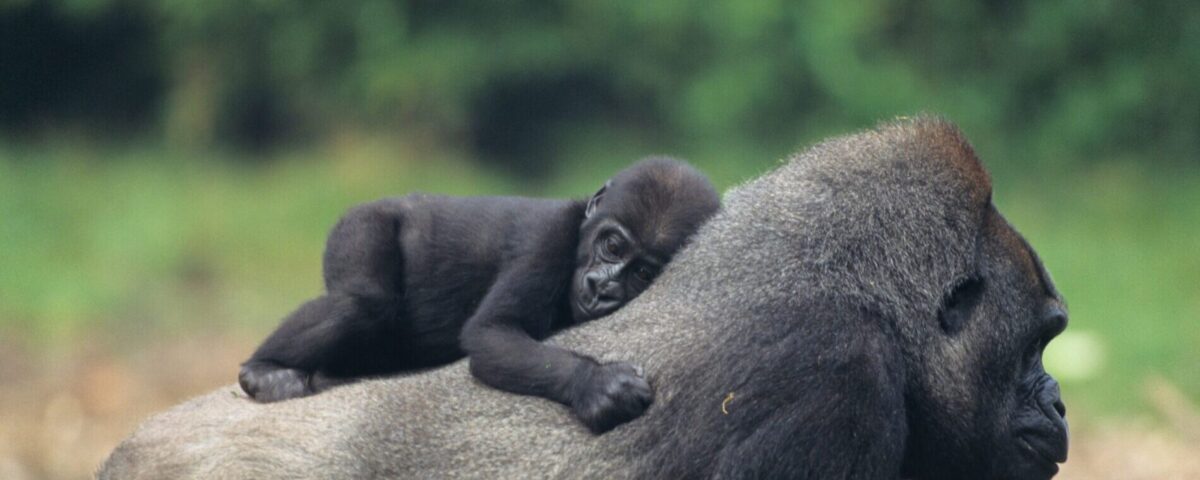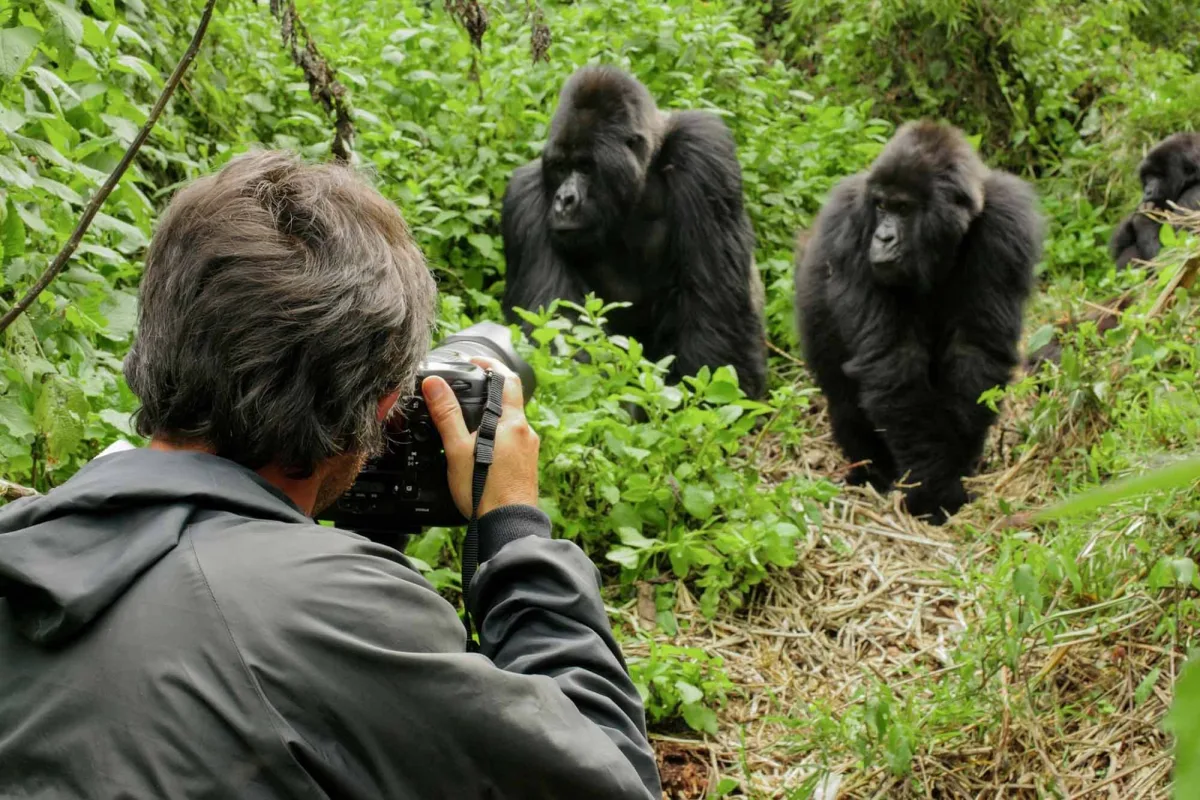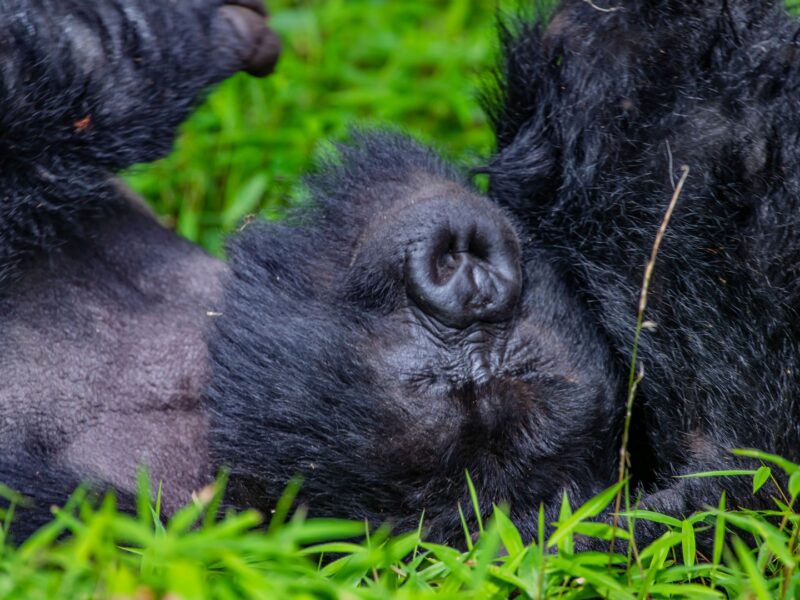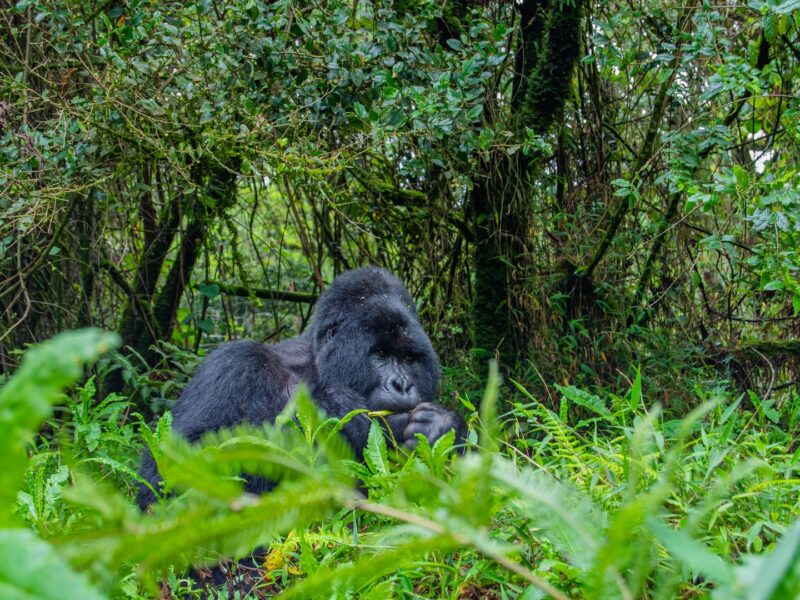
Gorilla Trekking Permits in Uganda
July 17, 2025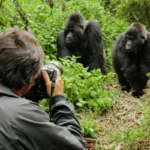
What to Pack for Gorilla Trekking
July 17, 2025A Day in the Life of a Gorilla Family in Bwindi
As dawn breaks over the mist-shrouded canopy of Bwindi Impenetrable National Park, a day begins not only for the elusive mountain gorillas but also for travelers embarking on Uganda gorilla trekking adventures. Bwindi Impenetrable Forest, a UNESCO World Heritage site and one of Africa’s oldest rainforests, holds secrets in every leaf, vine, and misty valley.
For gorilla families nestled deep within the forest, mornings start at their night nests—carefully crafted beds of leaves built the evening before. Infants cling close to mothers, juveniles tussle playfully, and dominant silverbacks rise, surveying their domain. These moments, often hidden from the wider world, set the rhythm of life that Uganda gorilla safaris strive to respectfully observe.
For visitors, the day begins differently but with equal anticipation. Trekkers gather early at sector headquarters—whether in Ruhija, Rushaga, Buhoma, or Nkuringo to receive a briefing on gorilla trekking etiquette, safety, and conservation.
By mid-morning, trekking groups set off into the Bwindi Impenetrable Forest, guided by trackers who’ve left before dawn to locate the gorillas. The air hums with bird calls and the scent of earth. Paths might twist steeply or cut through thick undergrowth, reminding visitors why this is called Africa gorilla trekking rather than a simple hike.
For the gorillas, morning means breakfast: bamboo shoots, wild celery, leaves, and fruit—over 20 kg per day for an adult male. They feed quietly, sometimes pausing to gaze at the newcomers from a few meters away, their intelligence and calm presence creating an unforgettable connection.
How Do Gorilla Families Spend Their Afternoons?
As midday approaches in Bwindi Impenetrable National Park, the rhythm of the gorilla family slows. The playful energy of the morning feeding session gives way to rest, grooming, and nurturing—behaviors that reveal the deeply social nature of these remarkable primates.
Silverbacks, often towering at over 180 kg, settle under broad leaves or against tree trunks, watchful yet calm. Mothers gently groom their infants, removing twigs and insects while reinforcing bonds critical to the group’s harmony. Juveniles continue their antics, swinging on vines or play-fighting, learning the coordination and strength they’ll need as adults.
For trekkers on Uganda gorilla tours, afternoons often mean a quiet hike back, filled with reflection and wonder. The memory of standing within meters of a silverback, hearing the soft grunts and rustling leaves, stays long after the trek ends. Guides share stories of conservation successes and challenges: from anti-poaching patrols to the painstaking gorilla habituation process that makes these encounters possible.
Beyond gorilla trekking safaris, afternoons in Bwindi can be enriched with cultural tours to local communities. The Batwa pygmies, once forest dwellers themselves, invite visitors to learn about their ancient hunter-gatherer traditions, music, and crafts. These interactions add human context to the forest: stories of coexistence, displacement, and resilience.
In the broader landscape of a Uganda gorilla safari, afternoons might also be dedicated to exploring other forest residents—chameleons, monkeys, and over 350 bird species including the iconic African green broadbill. Each sighting adds depth to the experience, reminding travelers that Bwindi Impenetrable National Park isn’t only about gorillas; it’s a living tapestry of biodiversity where every creature plays a part.
What Evening Rituals Close a Gorilla Family’s Day and How Do Travelers Experience Bwindi at Sunset?
As daylight fades, gorilla families in Bwindi Impenetrable Forest prepare for nightfall with remarkable precision. Each member builds a fresh nest—sometimes on the ground, often in trees—to protect against insects and damp earth. Infants share nests with mothers, while silverbacks construct larger, sturdier beds nearby, ever watchful for danger.
These evening rituals underscore gorillas’ intelligence and adaptability, passed down through generations in the dense corridors of Bwindi Impenetrable National Park. As the forest darkens, vocalizations soften: low grunts, chest beats, and playful squeals give way to quiet. By night, the gorillas rest, conserving energy for another day of foraging and family life.
For travelers, evenings after a Uganda gorilla trekking adventure hold their own kind of magic. Lodges and eco-camps perched on Bwindi’s forested slopes offer panoramic views where mists curl through valleys. Sundowners are shared on wooden decks, conversations carrying the thrill of the day’s sightings. Local chefs prepare meals with Ugandan flavors: matoke (green banana stew), fresh tilapia, and groundnut sauce, reminding guests that the safari extends beyond the trek into culture and hospitality.
Beyond the lodge, optional evening activities enrich Uganda gorilla tours: village walks to meet local craftspeople, traditional dance performances, or night nature walks guided by rangers, revealing nocturnal creatures from bush babies to tree hyraxes.
These moments—both gorillas settling into nests and travelers reflecting under starry skies—frame the profound symmetry of a day in Bwindi: lives interconnected by a shared landscape, each sunset marking both an ending and a quiet promise of dawn.
What Other Safari Activities Can You Combine with Gorilla Trekking Safaris in Bwindi?
Uganda gorilla trekking is the highlight for many travelers—but it’s just the beginning of what Uganda gorilla tours can offer. At Ngeye Tours & Travel, we design itineraries that weave together gorilla trekking safaris with other unforgettable adventures, transforming a single experience into a multifaceted journey.
Queen Elizabeth National Park, a short drive from Bwindi, invites visitors to witness tree-climbing lions of Ishasha, elephants crossing the savannah, and the famous Kazinga Channel cruise where hippos, buffaloes, and crocodiles converge at sunset. It complements the intimacy of gorilla trekking with the grandeur of classic African wildlife.
In Kibale Forest National Park, chimpanzee tracking adds another dimension to primate exploration. Here, travelers can also participate in a chimpanzee habituation experience, similar in spirit to the gorilla habituation treks offered in Rushaga sector.
For those drawn to Uganda’s landscapes, Lake Bunyonyi offers canoeing between its 29 islands, each with legends and local stories. Meanwhile, Mgahinga Gorilla National Park provides the chance to track golden monkeys or hike the Virunga volcanoes, rewarding trekkers with panoramic views spanning Uganda, Rwanda, and Congo.
Cultural experiences deepen the journey further: tea and coffee tours in Buhoma sector, where travelers learn about cultivation and roasting; Batwa cultural trails sharing stories of forest life; and visits to craft cooperatives that empower local women.
Combining these safari activities with Africa gorilla trekking ensures that travelers leave not only with memories of mountain gorillas but also with a holistic appreciation of Uganda’s diversity—wildlife, landscapes, and people interwoven into a single narrative.
Why Is Uganda the Top Destination for Gorilla Trekking in Africa?
Among Africa gorilla trekking destinations, Uganda consistently stands out. But what makes it the best gorilla trekking safari choice for many travelers?
First, Uganda is home to roughly half the world’s mountain gorilla population, primarily within Bwindi Impenetrable Forest and Mgahinga Gorilla National Park. Bwindi alone hosts over 20 habituated gorilla families, spread across Buhoma, Ruhija, Rushaga, and Nkuringo sectors. This diversity provides flexibility in securing permits and variety in trekking experiences.
Second, cost matters. Uganda gorilla trekking permits remain significantly more affordable—around $700 compared to Rwanda’s $1,500—without sacrificing quality or conservation standards. For travelers, this balance means more can experience gorilla trekking safaris responsibly.
Third, Uganda’s rich safari ecosystem allows visitors to blend gorilla trekking with big five safaris, birding, adventure sports, and cultural tours, something Rwanda and Congo cannot match in the same breadth.
The terrain also contributes to Uganda’s appeal. Bwindi’s dense, ancient rainforest offers an authentic adventure: narrow trails, mist-filled valleys, and steep climbs that make encounters hard-won and deeply memorable.
Finally, Uganda’s warmth—both in climate and hospitality—creates an environment where travelers feel connected not just to wildlife, but to local communities whose futures are intertwined with conservation.
These combined factors—population, affordability, diversity, landscape, and local engagement—solidify Uganda’s place as Africa’s premier destination for gorilla trekking safaris.
How Does Gorilla Habituation Transform the Trekking Experience in Bwindi?
Many travelers ask: what is gorilla habituation, and how does it differ from standard Uganda gorilla trekking?
In traditional gorilla trekking, visitors spend up to one hour with a fully habituated family—groups accustomed to human presence after years of gentle, careful exposure by rangers and researchers.
Gorilla habituation, offered mainly in Rushaga sector of Bwindi Impenetrable National Park, allows travelers to join researchers for up to four hours observing a family still becoming used to people. These gorillas might keep greater distance, show curiosity, or retreat—providing an authentic glimpse into natural behavior and the science behind conservation.
This immersive experience costs more (around $1,500) but offers richer storytelling: seeing how trackers communicate with gorillas, learning about their social dynamics, and understanding the delicate balance of habituation—making gorillas approachable without compromising their wild nature.
For travelers seeking depth over brevity, gorilla habituation transforms Uganda gorilla tours into participatory conservation journeys, where every observation contributes to the long-term survival of mountain gorillas.
Why Choose Ngeye Tours & Travel for Your Uganda Gorilla Safari?
Crafting the best gorilla trekking safari requires local knowledge, ethical commitment, and a personal touch—values at the heart of Ngeye Tours & Travel.
We’re more than guides; we’re storytellers rooted in the communities bordering Bwindi Impenetrable Forest. Our team knows each trail’s history, each gorilla family’s lineage, and the best ways to combine trekking with cultural tours, wildlife safaris, and adventure.
We design Uganda gorilla tours tailored to your pace and interests, ensuring your journey is comfortable and respectful to wildlife. By traveling with us, you directly support conservation and development projects making your safari a force for good.
Whether it’s your first gorilla trekking safari or your fifth, Ngeye Tours & Travel invites you to experience Uganda not just as a destination but as a living story—shared with every step you take in Bwindi Impenetrable Forest.


